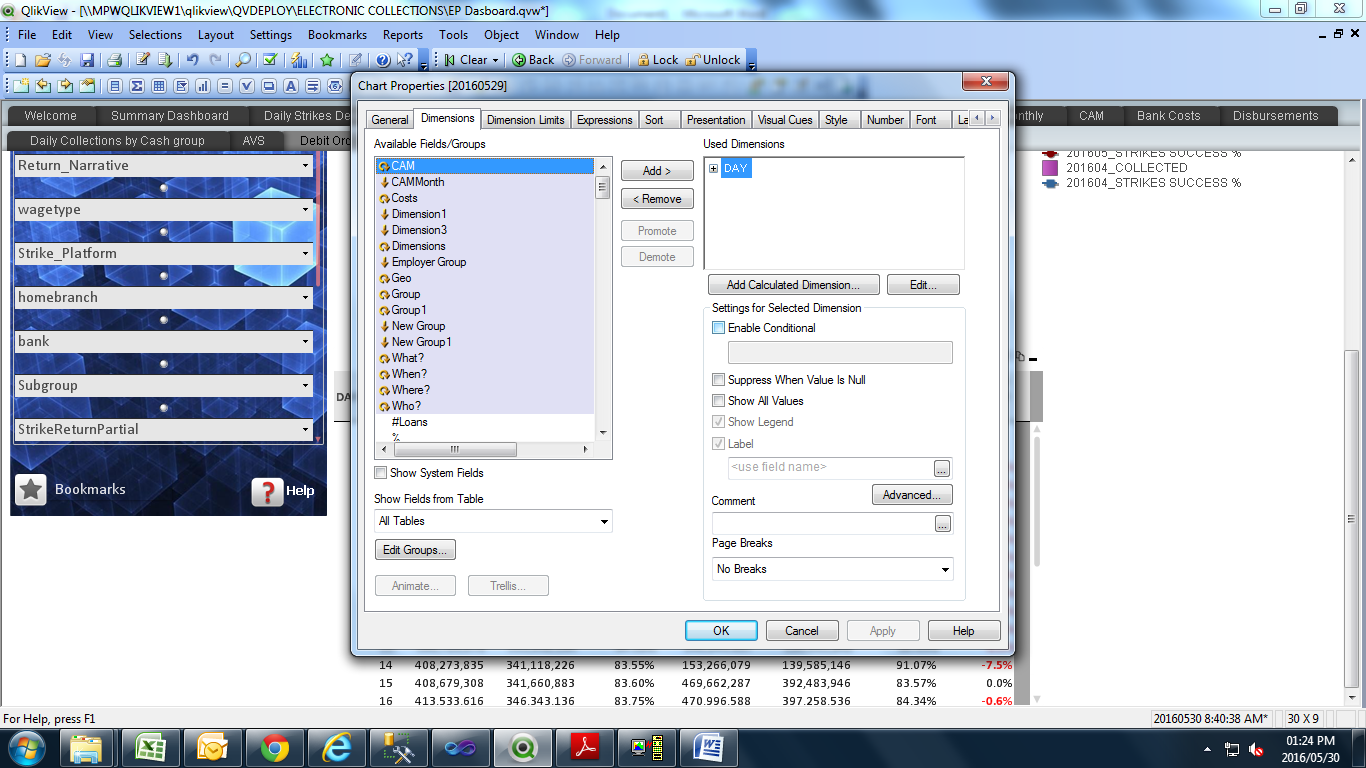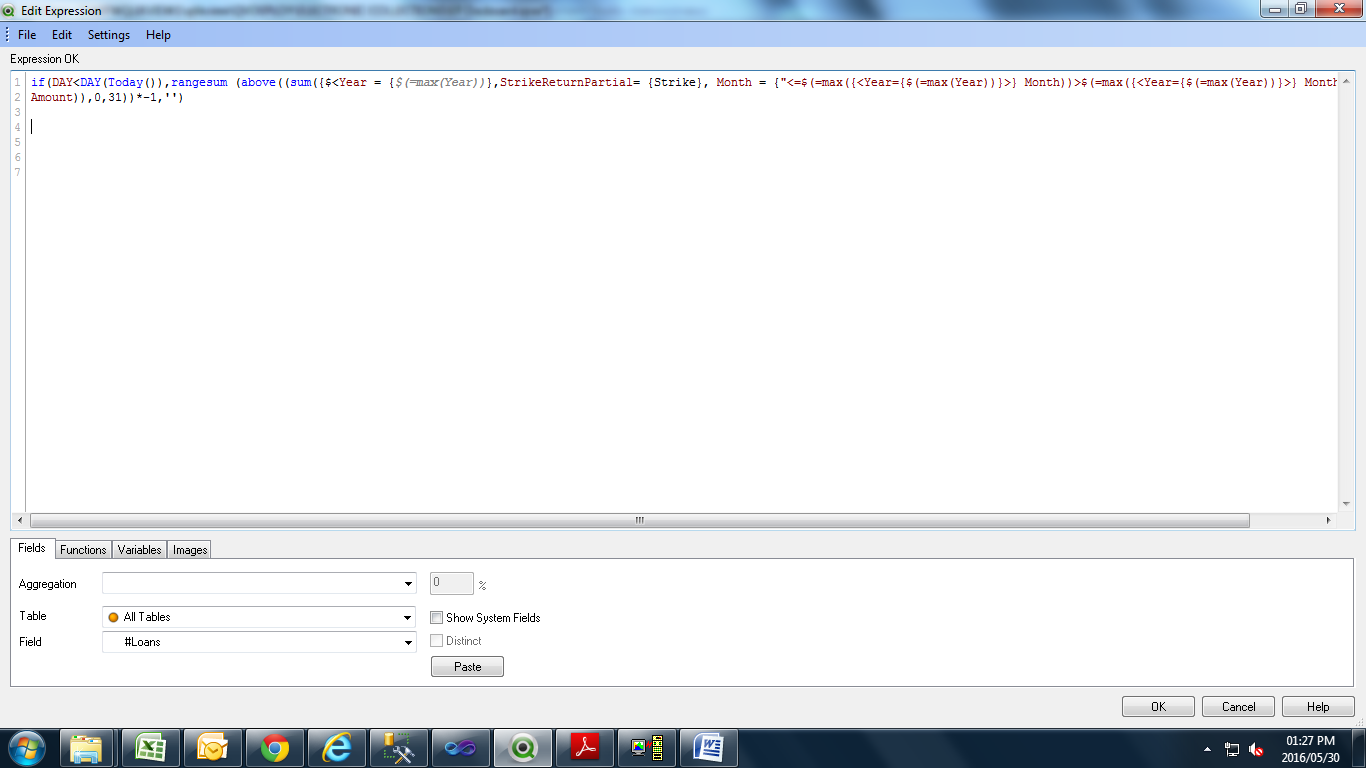Unlock a world of possibilities! Login now and discover the exclusive benefits awaiting you.
- Qlik Community
- :
- All Forums
- :
- QlikView App Dev
- :
- Re: Set Identifire
- Subscribe to RSS Feed
- Mark Topic as New
- Mark Topic as Read
- Float this Topic for Current User
- Bookmark
- Subscribe
- Mute
- Printer Friendly Page
- Mark as New
- Bookmark
- Subscribe
- Mute
- Subscribe to RSS Feed
- Permalink
- Report Inappropriate Content
Set Identifire
Hi Guys,
please help, what does the below statement mean :
if(DAY<DAY(Today()),rangesum (above((sum({$<Year = {$(=max(Year))},StrikeReturnPartial= {Strike}, Month = {"<=$(=max({<Year={$(=max(Year))}>} Month))>$(=max({<Year={$(=max(Year))}>} Month)-1)"}>}
Amount)),0,31))*-1,'')
Many thanks,
Treasure Dlamini
- Mark as New
- Bookmark
- Subscribe
- Mute
- Subscribe to RSS Feed
- Permalink
- Report Inappropriate Content
Expression seems to be accumulating Amount for days up-until the Today()'s day for each month
- Mark as New
- Bookmark
- Subscribe
- Mute
- Subscribe to RSS Feed
- Permalink
- Report Inappropriate Content
Taken out of context, this is damn difficult to explain. The expression refers to at most 31 previous cells in a chart/table so Sunny is probably right. Also, in each separate month, it will not pass the current day number, so its a "DayToDate" accumulation, if you can call it that way.
Can you post a screenshot with the chart dimensions?
Entering an expression like this in the expression editor and adding whitespace makes it a lot more readable. Like so:
if (DAY < Day(Today()), // Only for daynumbers smaller than today's day number
rangesum(
above(
sum({$<Year={$(=max(Year))}, // max selected year, max month in that year
StrikeReturnPartial={Strike},
Month={"<=$(=Max({<Year={$(=Max(Year))}>}Month))>$(=Max({<Year={$(=Max(Year))}>}Month)-1)"}
>}
Amount),
0, 31) // Go back max 31 days
) * -1, // Invert
'' // Display nothing for days >= today's day number
)
AFAIK it may do weird things in January.
Peeter
- Mark as New
- Bookmark
- Subscribe
- Mute
- Subscribe to RSS Feed
- Permalink
- Report Inappropriate Content
Hi Peter/Sunny
Thanks guys, I see what you mean here, Peter please see below screenshots,
I now see the numbers are accumulating, but I still don't know what does the expression min,


